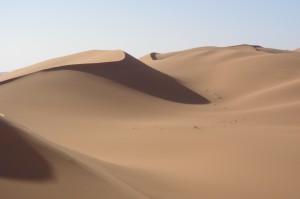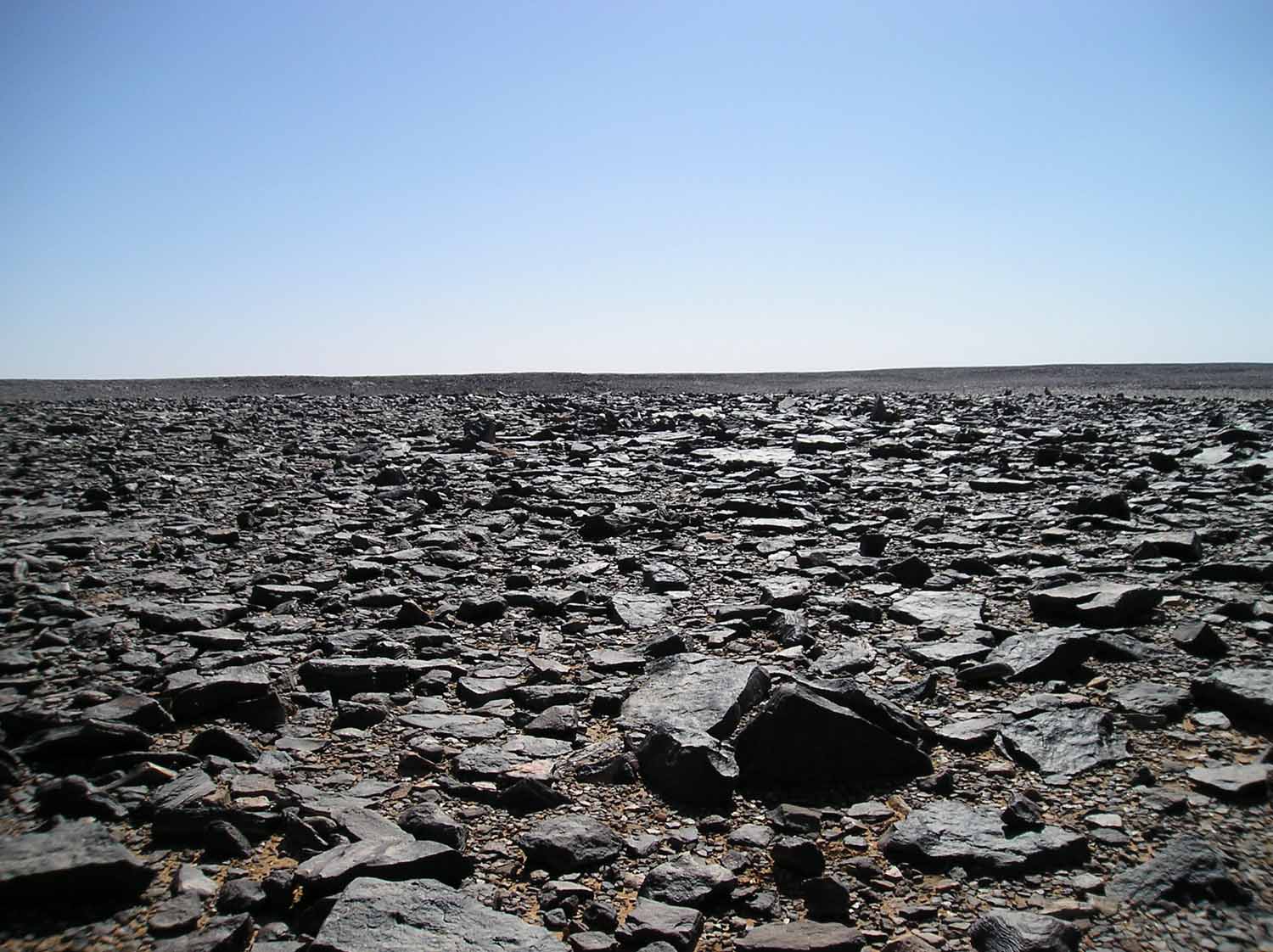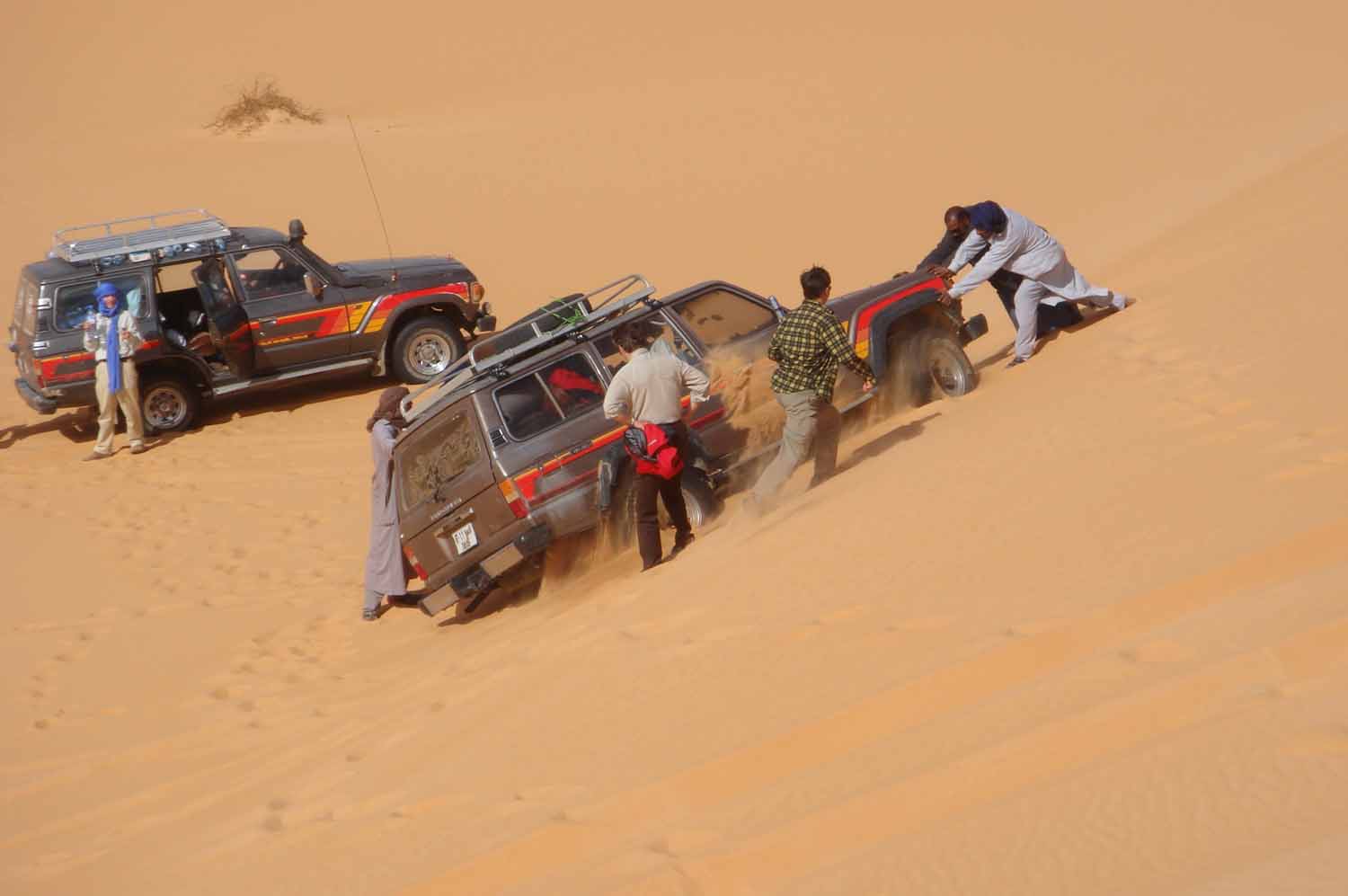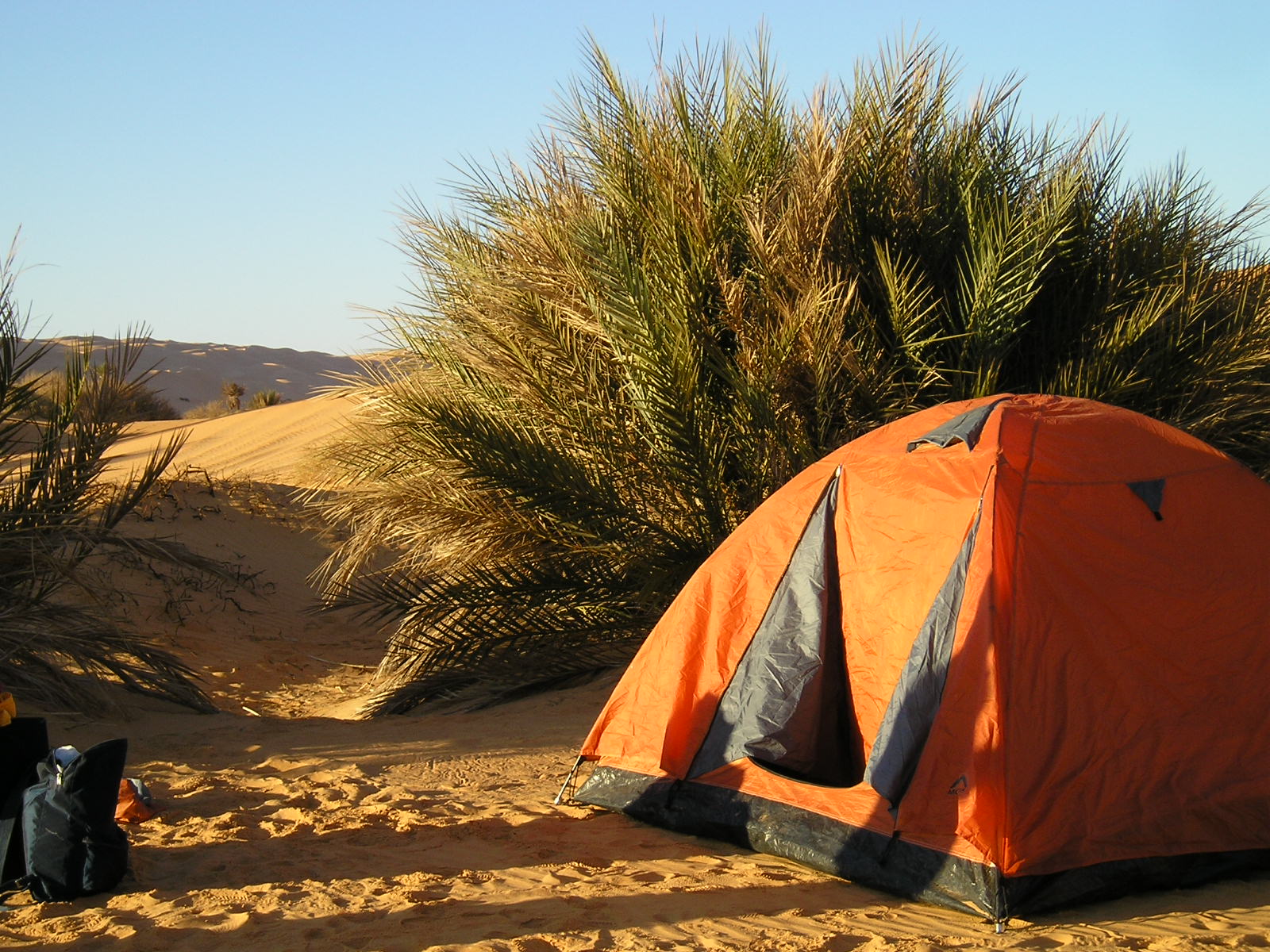It was not until my desert tour through Libya in 2007 that I experienced what a desert travel, especially travelling the Sahara desert, really means. In less than two weeks I saw the most diverse and fascinating landscapes. Before this trip, I never really considered desert travel and used to think of the Sahara desert as mountains of sand, as big, repetitive and sometimes dangerous. Little did I know that “the” desert, in fact, does not exist.
The Arabic word Sahara means “the Great Yellow”, but don’t expect to see exclusively yellow-golden sand dunes at sunset.



Discovering the unknown
Naturally, since I am no desert specialist, it was a guided tour that brought me to Libya, with experienced drivers who knew what they were doing. Driving through the desert turned out even more difficult than I expected: Imagine driving a car up and down steep hills covered by freshly fallen snow.
We started out by driving through a steppe-like area which then soon turned into a flat gravel desert. I had never seen an area as flat before and it would probably have bored me to death, had there not been these gigantic sand dunes at the horizon, promising adventure.

The black desert
Many hours of driving later, the scenery began to change slowly. Still flat, but now a plane covered by larger stones started to unfold around us. This was not very convenient to drive on because, naturally, there are no roads in the desert and we very driving only on vaguely visible tracks. Not only did the stone around us become bigger the further we ventured into the desert, they also changed their color from a yellowish brown to black. We were driving through a black desert.
Our guide had of course a logical explanation for this phenomenon which he explained to us as desert varnish, a form of oxidation caused by the heat and the wind, creating the black surface. The funny thing was that when you lift one of these stones, its bottom still looks like regular sandstone.
After a few hours of driving, we stopped again at a plateau, in the middle of the black desert. Everything around us had transformed into this apocalyptic landscape. I turned around, 360 degrees, and all I could see was this moonscape, until the horizon, everywhere. Just the clear blue sky brought some color into this breathtaking picture.

Finding myself in this landscape gave me for the first time in my life a sense of what infinity is; because it was all around me. Throughout our trip, we rarely crossed other travelers, which created a strange feeling of loneliness, somehow mixed with adrenaline. What if something happened to one of us? Who would come to our rescue here, in the middle of nowhere?
A look back in time
In this literally “deserted” land, it feels like a miracle when you suddenly come across rock engravings showing humans and animals like elephants and giraffes. It is hard to imagine that this place once was a lush savannah.



Sailing the dunes
And then, the fun began. We finally reached what I had naively thought of before as “the” desert: a sea of sand dunes; many of them rising steeply up to 10-20 meters from the ground. Driving through the dunes was like taking a ride on a rollercoaster – but just so much better at the same time; a bit like sailing on a small ship through rough seas.
(pics of steep dunes)




I am glad that Massoud, my driver, obviously knew what he was doing because we had no serious accident throughout the trip, which is almost a miracle. However, it was sometimes challenging to steer the car up these steep dunes and often, the car would dangerously lean towards one side, threatening to flip over.
(pics of steep dunes and cars)
At nightfall, we set up our tents and our drivers made a bonfire and prepared tea for us. They sang Arab songs and even danced from time to time. And, although forbidden by law at that time in Libya, in the evenings they sometimes had a sip out of a plastic water bottle that was, you guessed it, not at all filled with water but with date liquor. You have to remember that when I was travelling Libya, it was still under Gaddafi’s rule, which meant for us that our group was accompanied by a police man in civil clothing. It was not hard to guess who from our group it was: There was only one Libyan who was not driving a car and who was wearing city clothes, not very well adapted to desert travel. Our guide told me later that all policemen from the North are obliged to spend some time in the desert to become “real” Libyans. To him, the desert was as exotic as to us.
Perfect silence in the tabletop mountains
By far the most impressive place where we set up camp was in the Acacus mountains. We made our camp in a sandy valley, surrounded by strange towers of sandstone, the remainders of mountains that had been reduced to large rocks, sticking out of the sand like gigantic teeth.
Once again I found myself in a landscape that reminded me more of another planet than everything I had ever seen before.
Early in the morning, before the sun had set above these strange mountains, I took my camera and climbed up one of these rocks. I sat at the top, looking down at our tents that were looking like toys scattered on a beach, and waited for the sun to set slowly above the mountains.



As I was sitting on top of this rock, my fellow travellers still asleep and the cars parked, I realised something: I was surrounded by complete silence. No cars, no people talking, no wind in the leaves, no birds – just perfect silence. It was something I had never experienced before and have never experienced again afterwards – at least so far.
At the desert festival in Ghat
After we had crossed the mountains, we slowly approached civilisation again by setting up camp close to the city of Ghat, a border town in the triangle of Libya, Tchad and Niger. It is a small town with houses built entirely of yellow clay.




While we were in town, a local festival was taking place and camel riders from the entire region had gathered for a race. It was a colorful mix of people and everybody seemed to be in a good mood. I was even asked to give a short interview to Libyan TV about my experience here in the Libyan Sahara.
At the Mandara lakes
From the Southern town of Ghat we turned around and headed North, direction Tripoli as our trip was slowly coming to an end. But on our way, we stopped at the Mandara lakes.
Yes, lakes in the middle of the desert. Luckily, we were not dying of thirst because the water in these lakes is very salty. Yet, I could not resist and jumped in – a nice refreshment after almost a week without a shower. Strangely, only the first 30cm of the water surface had been heated up by the sun while the water deeper down was ice cold. It comes from paleolithic underground water reservoirs and therefore the lakes are also called “paleolakes”. These reservoirs have been there for millions of years, easily proven by the tiny red primeval shrimp living in these waters that can be found nowhere else in the world (at least not living).




Still, the bath was very refreshing, not least because of the great view at a gigantic 50m high dune, starting right behind the other side of the lake. This dune – or rather sand mountain – was the biggest I had seen throughout the entire trip. What better thing to do than rent a snowboard or ski, hike up and go down again on your board?
It is an unlikely thing to do in the Sahara desert and of course I did it. It’s a once in a lifetime chance but I can tell you: nothing beats snowboarding down a mountain covered by freshly fallen snow in the alps. Sand is unfortunately too sticky to really make the most of these 50 meters of downhill snowboarding. But still, the view from the top alone was worth it.
Back to Tripoli
This crazy experience was an appropriate ending to our desert adventures. Soon after, we went back to Tripoli to join civilisation again.
Sometimes I think of our driver Massoud and the other Libyans that I met there and wonder what became of them during the Arab spring. Even now, years later, Libya is still a place where chaos reigns. I travelled Libya when it was still safe and I hope it will become safe again one day, during my lifetime still. Because even if the Sahara desert is vast, the Libyan Sahara is certainly one of the most fascinating spots to explore which allowed me to see and feel things I had never experienced before.







One thought on “1001 deserts: Sahara desert travel in Libya”